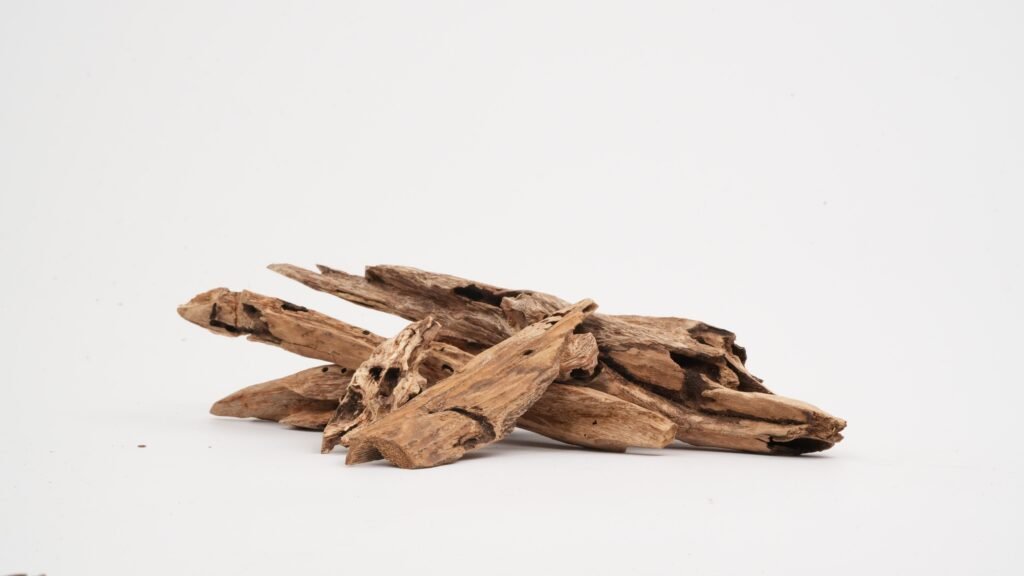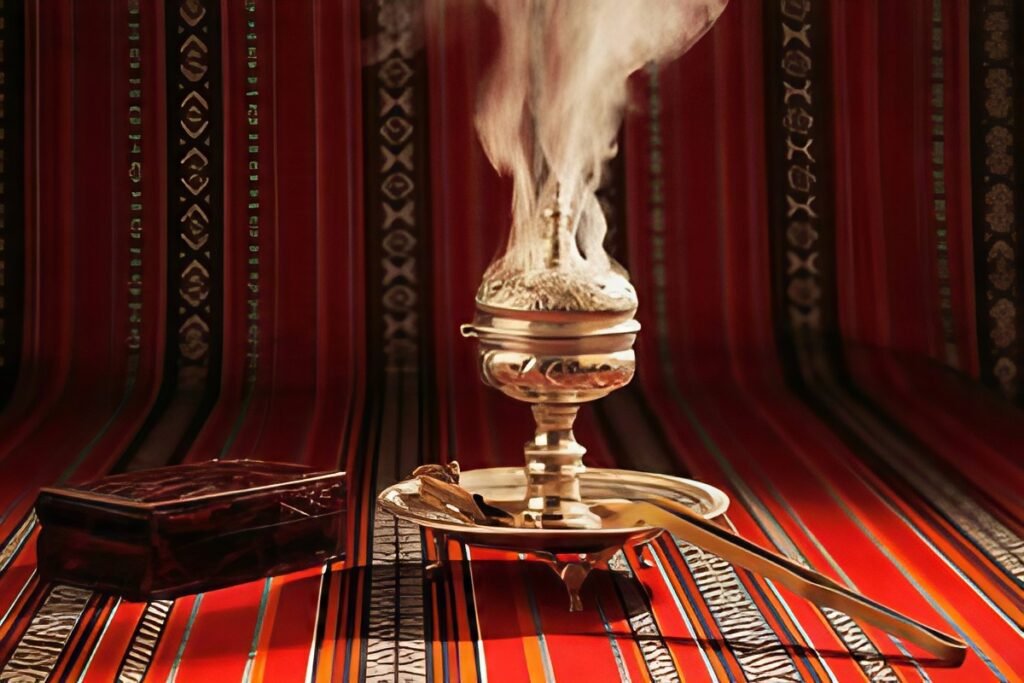Formation of Oud Worm Tunnel: Nature’s “Art of Wounds”
The formation of Oud Worm Tunnel originates from the self-repair mechanism of oud trees, primarily Aquilaria species. When these trees are infested by insects such as termites and longhorn beetles, they secrete resin to encapsulate the wounds and prevent infection. Over time, under the combined influence of the acidic substances secreted by insects and natural environmental factors, the resin gradually undergoes oxidation and solidification, forming oud with visible insect-bored traces. This type of oud is known as
“ Oud Worm Tunnel”
, characterized by its unique perforated patterns and rich resin content.
The formation of the Oud Worm Tunnel is to form incense along the track of the worm’s eye. This process usually takes decades or even hundreds of years, so the shape of the incense body is quite unique. Generally, when taking incense, the incense farmer will cut off the sawdust without incense, so that the complete shape of the worm hole will be highlighted, such as mountains, pen holders, etc. Therefore, compared with the ordinary block-shaped incense body, it is more special and beautiful! Therefore, the natural shape of many Oud Worm Tunnel is already very artistic, and basically no later carving processing is required to collect them as natural works of art.

Classification and characteristics of Oud Worm Tunnel
- The Fusion of Raw and Aged Resin Formation
Oud Worm Tunnel can be classified into two types based on whether the tree remains alive during the resin formation process:
Raw-formed Oud Worm Tunnel : This occurs while the tree is still alive. The resin forms as a response to insect damage but has not yet fully aged and oxidized. As a result, its fragrance is fresh, sweet, and vibrant.
Aged-formed Oud Worm Tunnel :This develops after the tree has died. The resin undergoes long-term natural aging, leading to a richer, deeper, and more complex aroma.
- Layered aroma
The aroma of Oud Worm Tunnel is centered on “sweetness”. After heating, it can release multiple layers of aroma – the first note is clear and sweet, the middle note has a floral and fruity honey scent, and the tail note turns into a steady woody scent. This complex change is due to the uneven distribution of resin caused by insect infestation, and the chemical reaction between the acidic substances secreted by insects and ants and the resin.

Identification of Oud Worm Tunnel
- Appearance: The surface of the real wormhole has naturally curved holes, no traces of straight artificial drilling, and at least one worm eye can be found on each wormhole.
- Structure: It must have the three elements of oud – ducts (pores), bast, and rays;
- Fragrance: After heating, the fragrance is rich, and fakes often have a pungent smell due to chemical treatment
- Price: The price of wormholes is generally much higher than that of other small pieces of oud.
To distinguish the authenticity of Oud Worm Tunnel, you need to master the above points. In addition,Oud Worm Tunnel is mostly hollow in the center, so it is not suitable for carving or turning beads. It can be said to be a standard incense material. High-fat Oud Worm Tunnel is not easy to come by, and the oilier the oud, the harder it will be. If you drop the Oud Worm Tunnel on the table and it makes a strong clanging sound, it is a standard good oud!

Historical Origin: The Fragrance of the World Across Regions
The history of Oud Worm Tunnel is long. As early as in ancient times, people had discovered and cherished this type of oud formed by insects and ants. In ancient China, oud has always been regarded as the “king of incense” and widely used in the palace, religious ceremonies and the daily life of the aristocracy. Oud Worm Tunnel is particularly popular because of its unique fragrance and relatively rare production.
In the Middle East,oud also has deep historical roots. The prosperity of the Silk Road brought oud from the East to the Middle East. Arab merchants were keenly aware of the extraordinary value of oud during trade and introduced it to the Middle East market.Oud Worm Tunnel has quickly gained a high reputation in the Middle East for its mellow and layered aroma. Traces of Oud Worm Tunnel can also be found in ancient documents and legends of the Middle East. It is often used for incense in the palaces of nobles, creating a luxurious and mysterious atmosphere. In some important social occasions, the aroma produced by burning Oud Worm Tunnel has become a symbol of the host’s noble status and elegant taste.

Application scenarios: From royal incense to modern life
1. High-end incense and incense rituals
The fragments of Oud Worm Tunnel can be directly put into the furnace to fry incense. Its aroma is distinct, with a sweet first note, a mellow middle note, and a long tail note. It is suitable for banquets for Middle Eastern nobles or religious celebrations to create a solemn atmosphere.
2. Collection and investment
Natural wild Oud Worm Tunnel is endangered (listed in the Convention on International Trade in Endangered Species of Wild Fauna and Flora in 1995), and its price is rising year by year. Kynam Oud Worm Tunnel or Hainan Oud Worm Tunnel with high oil content has both value preservation and appreciation value.
3. Luxury goods and craftsmanship
Oud Worm Tunnel can be inlaid in jewelry, knife handles, or made into sachets, becoming a symbol of identity and taste. In recent years, Middle Eastern designers have incorporated it into modern home fragrances to create an “Oriental Zen” lifestyle aesthetic.





